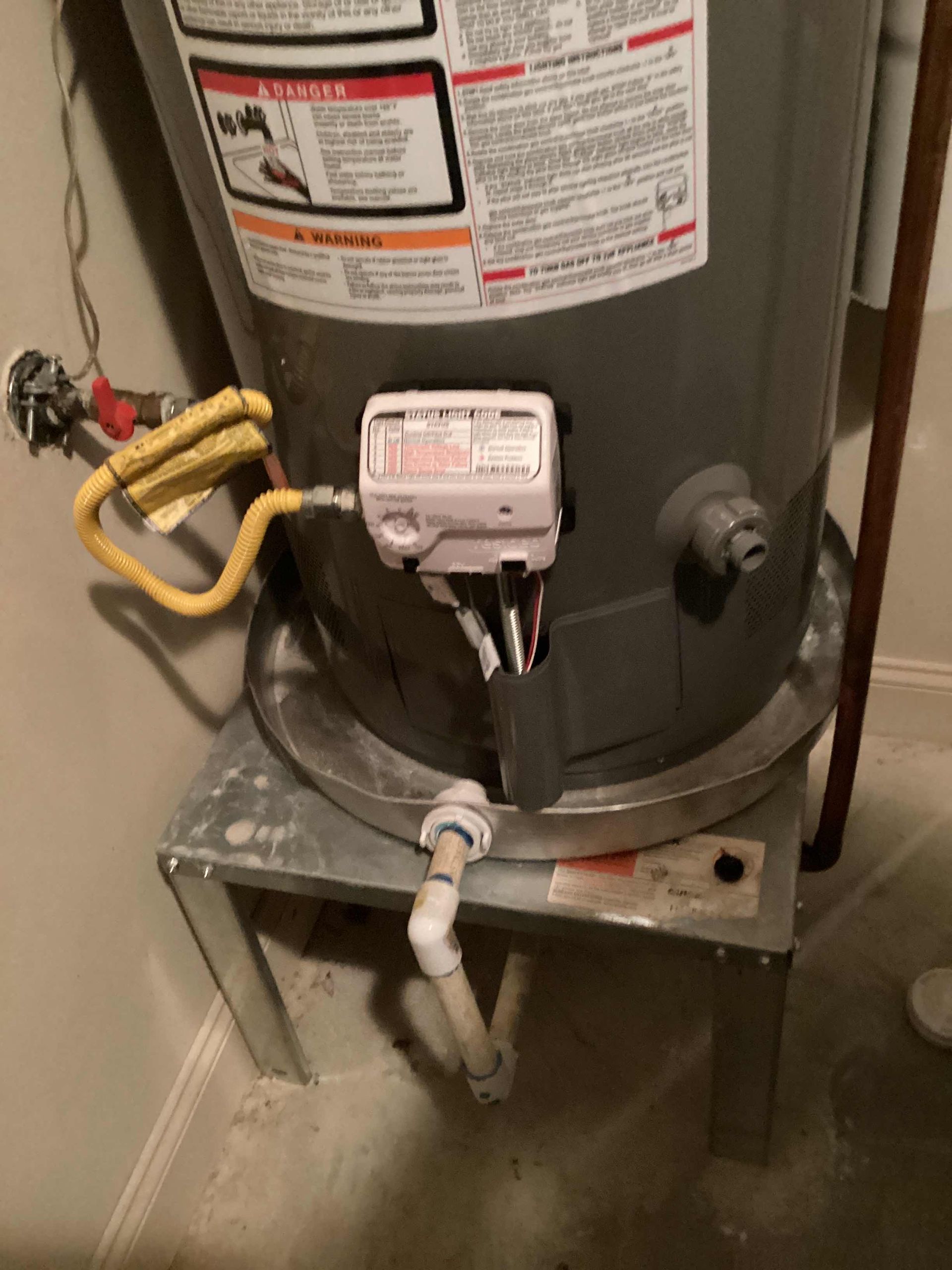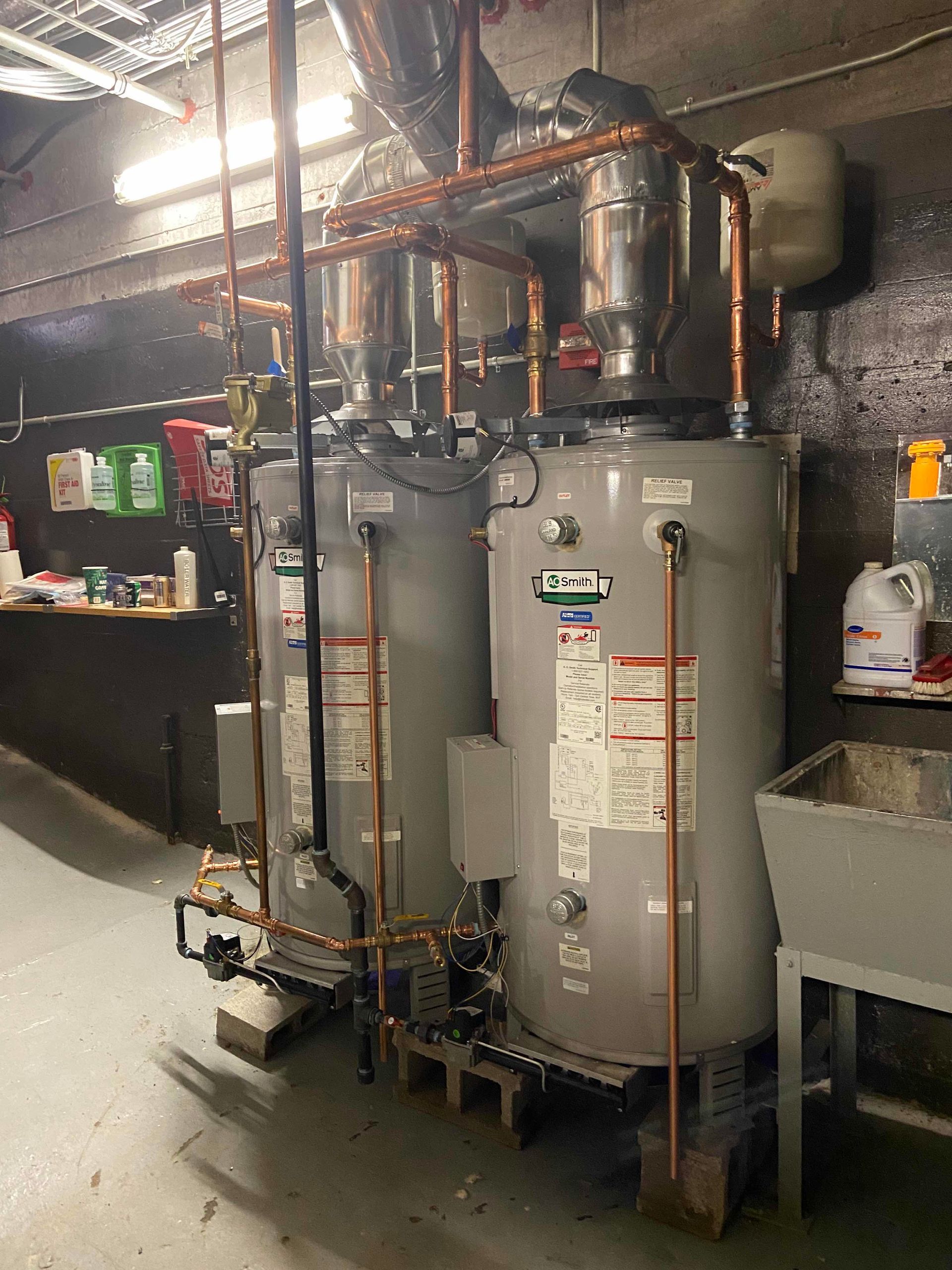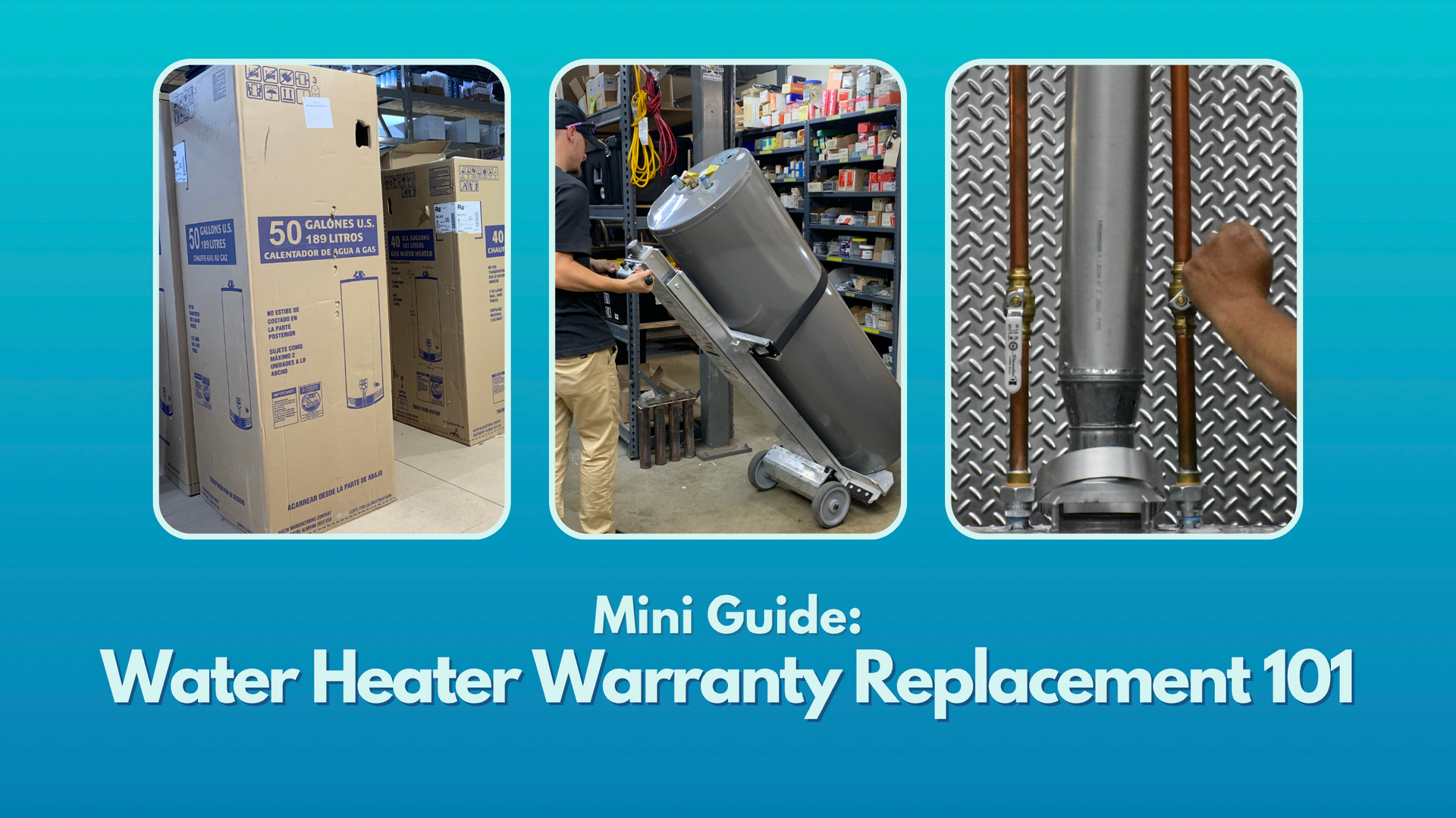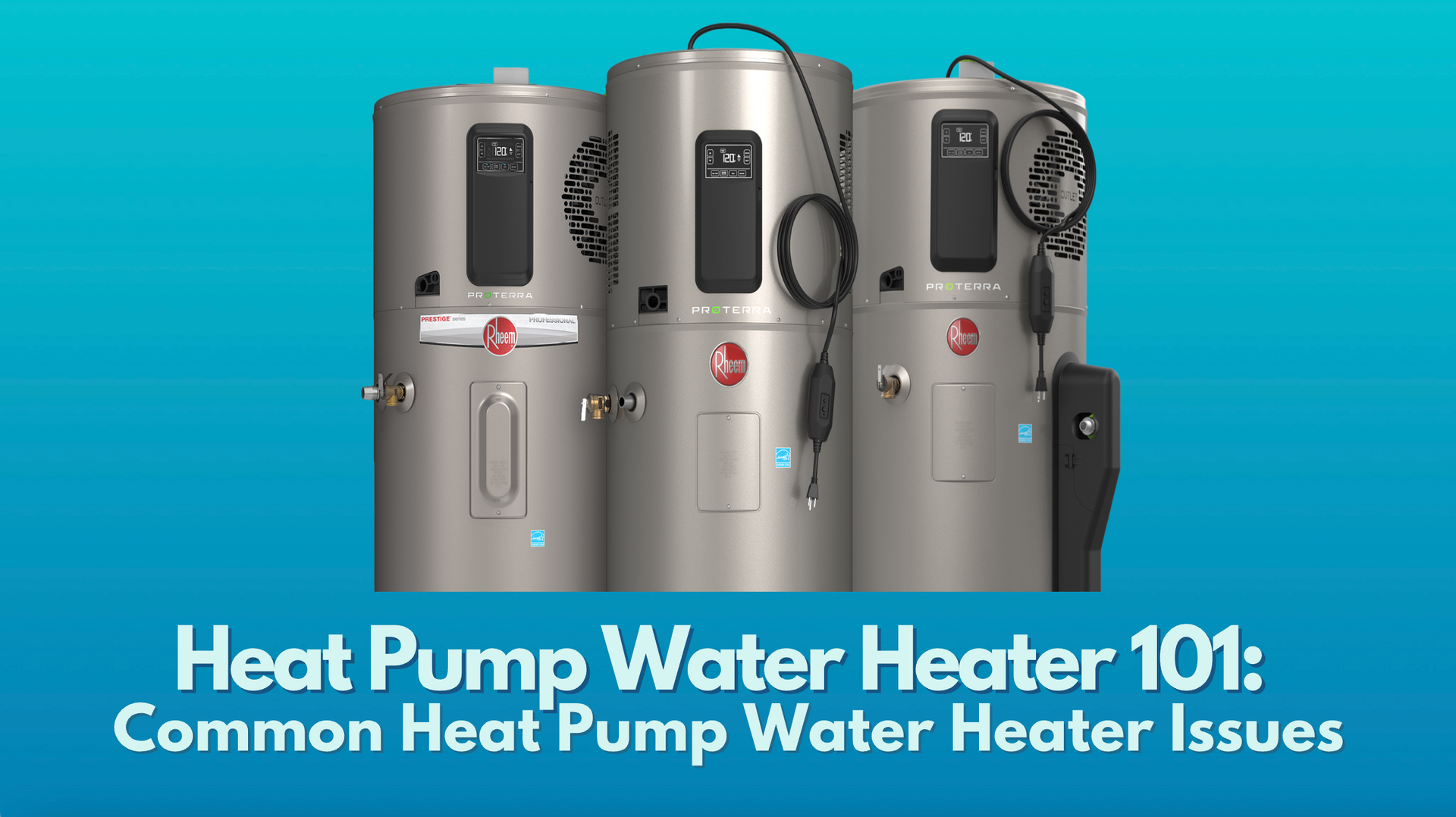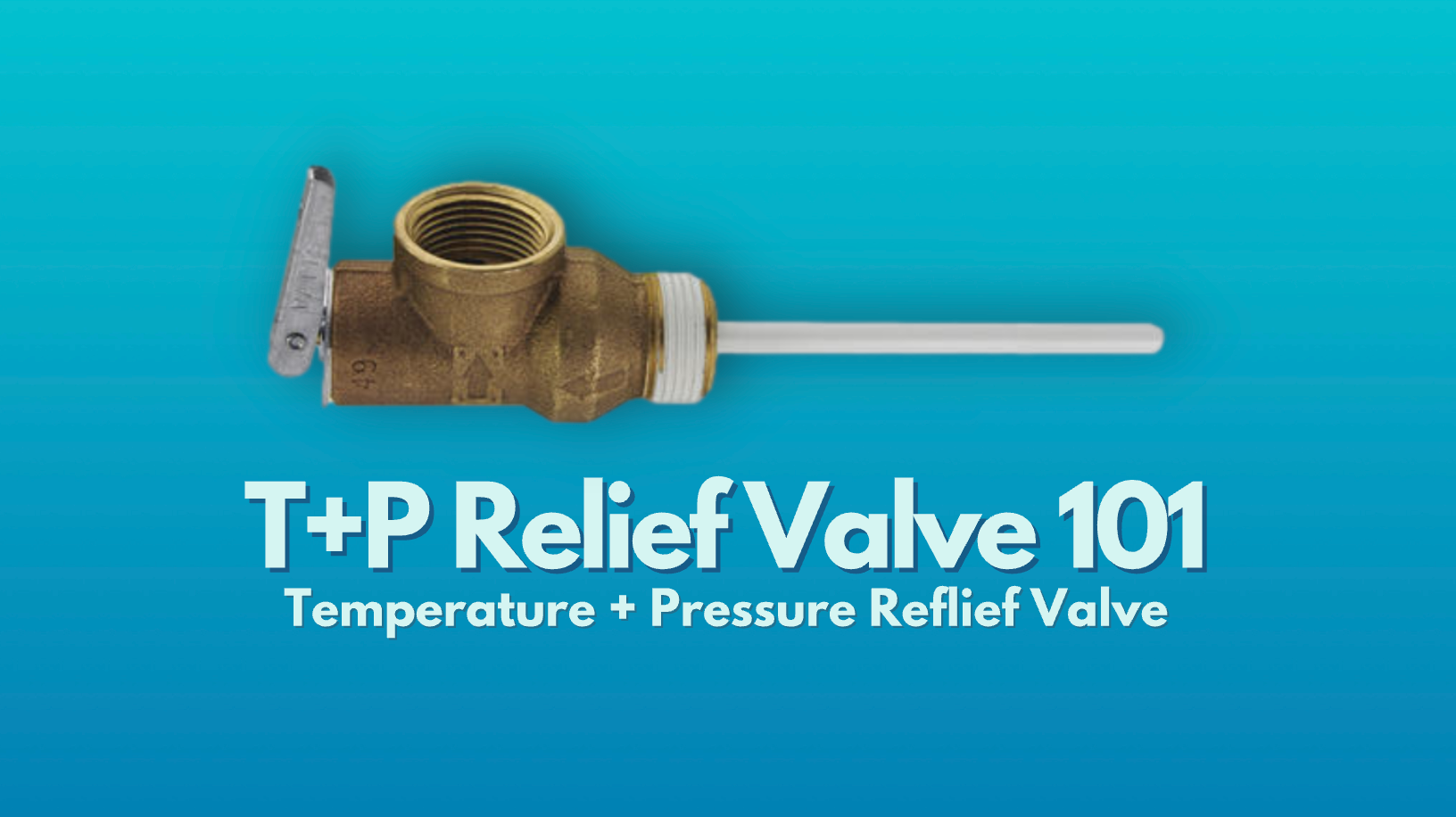Water Heater Flooding 101
Last Updated: June 23, 2022
Previous Update(s): September 16, 2022
Originally Published: October 24, 2019
***DISCLAIMER: PLEASE REFER TO YOUR MANUFACTURER’S INSTALLATION MANUAL FOR INFORMATION REGARDING YOUR SPECIFIC MODEL. IF YOU ARE ATTEMPTING TO SERVICE YOUR OWN HEATER, PLEASE DO SO WITH CAUTION; U.S. WATER HEATING SOLUTIONS IS NOT RESPONSIBLE FOR THE RELATED OUTCOMES. THIS ARTICLE IS MEANT TO PROVIDE AN INFORMATIVE + EDUCATIONAL SUMMARY AND DOES NOT SUPERSEDE OFFICIAL ONSITE DIAGNOSIS/REPAIRS OR INFORMATION FROM YOUR UNIT'S MANUFACTURER.***
Water Heater Flooding vs. Flooded Water Heater
A Key Difference: How was the flooding caused?
With the majority of water heaters in the Midwest/South located in basements or even garages, flooding can often be the main culprit of the loss of hot water. It is important to note that there is a difference between flooding caused by a water heater and a flooded water heater. The former refers to instances where a water heater is responsible for damages to your home or business; in most cases, rather than a full-on flood, the unit has leaked. The latter, a flooded water heater, is most often the result of a natural disaster or a plumbing issue.
Will Flooding Affect My Warranty?
It is important to know that flooding resulting from plumbing issues and/or natural causes is NOT going to be covered by your manufacturer’s warranty (you can find a complete list of things that constitute a void of warranty inside your unit’s installation manual). Our technicians have seen it all: from units that suffered from heavy rains/flooding and had to be replaced to units that were covered in feces due to toilet overflow and other plumbing issues. The manufacturer’s warranty does not cover flooding because it is viewed as an unforeseen circumstance that is outside of the manufacturer’s control. If you live in an area that is likely to experience severe flooding, you should review your homeowner’s insurance policy to see if your water heater is covered. If not, you may want to consider purchasing flooding insurance, as water heaters are often considered necessary appliances and tend to be covered (please be sure to check with your potential provider PRIOR to purchase).
Water Heater with Severe Internal Leak
(aka flooding caused by a water heater)
In this case, the manufacturer's warranty covered the unit's replacement because the damage to the unit was the result of an internal manufacturing issue.
If you have a flood damaged water heater, a manufacturer's contracted service provider will not be able to service your unit due to liability issues. The manufacturer and service provider have no way to know if the unit may have been tampered with, if flood damage may be exposing them to unsafe working conditions (ie unsafe chemicals or waste may be present in the flood water), or if restoring power to the unit may be dangerous. Instead, they will recommend that the unit is replaced. If you choose to move forward with a replacement, it is imperative that your basement has had the opportunity to dry out and that the flood water has gone down. Service providers follow a list of safety based rules informed by the Air-Conditioning, Heating, & Refrigeration Institute. NOTE: Some manufacturers or legal documentation may refer to flood damaged water heaters as "submerged water heaters."
Manufacturers' Bulletins on Flooding
*CLICK THE LOGOS BELOW*
Although it is not recommended, in the event that your unit is not covered via insurance and you want to investigate on your own, please do so with your safety in mind and full understanding that any negative consequences are not the manufacturers’ or potential service providers’ liability. Once the unit and surrounding area have been dried out, be sure to turn off the shutoffs to the unit (even if you are not planning to repair your unit). Following the appropriate safety precautions, you are likely to find that your unit’s burner, gas valve, and/or ignitor need to be replaced. As previously mentioned, a warranty service provider will not be able to provide service according to safety regulations.
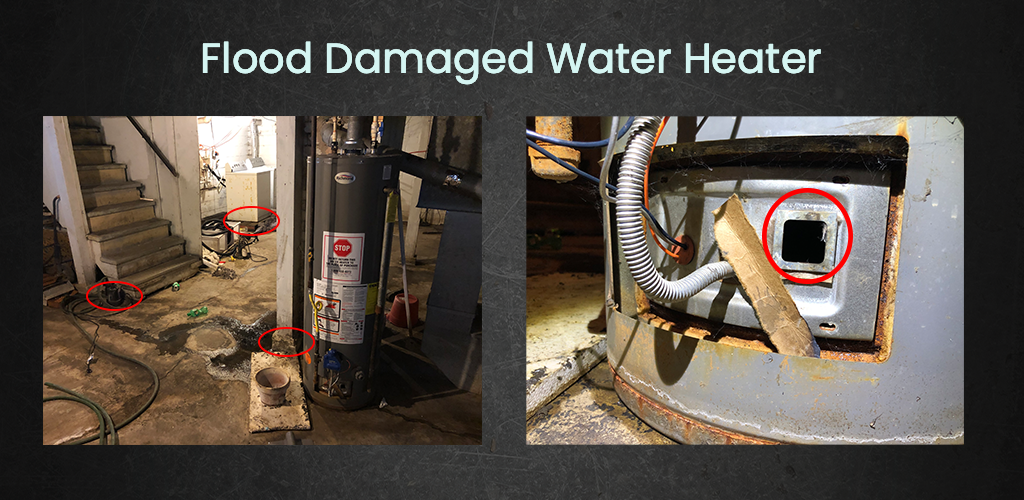
Evidence of Flooding
In the two photos above we see several different pieces of evidence that suggest this unit was damaged by flooding in the customer's basement + that the unit was tampered with:
- In the far background we see that the washer and dryer are on a stand to lift them off the ground.
- Near the stairs we see a utility pump + hose that were likely used to remove the water.
- On the walls, both next to the heater and near the stairs we see discoloration that marked the height of the flood water and may also be a sign of mold.
- In the second photo, we see a broken sight glass and piece of burned cardboard, indicating the hot combustion chamber + cold flood waters likely broke the sight glass. Then, the burnt cardboard appears as if the customer tried to manually re-light the burner. Most water heater manufacturers would consider this to be a form of tampering, which would result in a voided warranty.
- ***BONUS*** The combustion chamber was missing its door jacket to begin with (normally there is a cover over this section)
- ***BONUS*** The rust lines on the unit and around the burner chamber serve as evidence of exposure to standing water 👀
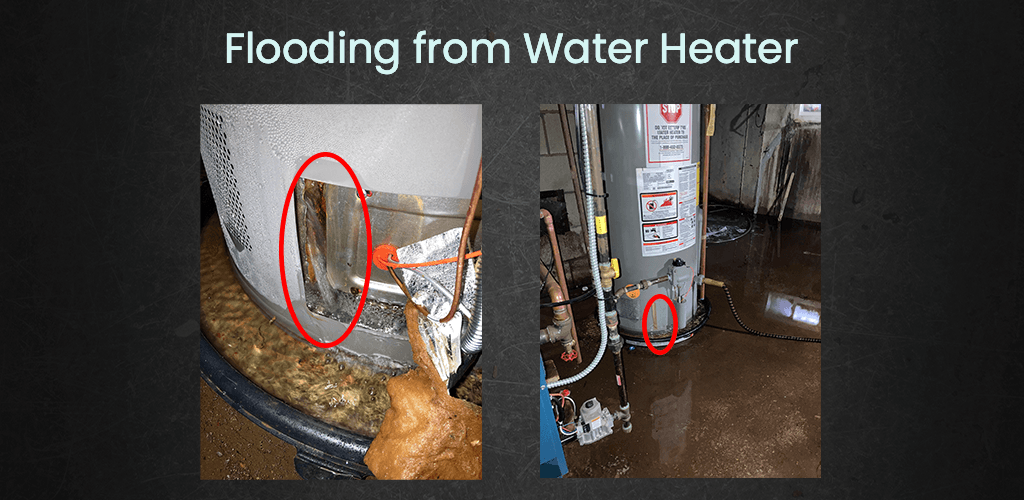
Evidence of Flooding Caused by Water Heater
On the opposite side of the spectrum, we see an issue that is covered by warranty: a unit that has a manufacturing issue and began leaked out across the customer's basement floor, resulting in a minor flood of the customer's basement. The other key difference to note is the amount of water: the previous image's water marks showed a larger quantity of water was present in the customer's basement than the amount shown here. In the residential context, the majority of water heaters are between 40-50 gallons and that volume would not reach a height of 2-3 ft off the ground as it filled a large basement (the average size basement is around 36'x24').
What happens when customers do not disclose that their unit has flood damage?
Based on the photographic evidence provided, you can already guess that most clients do not disclose the flood damage to the manufacturer nor to us ahead of time. In these cases, the technician arrives at the service call and documents the condition of the water heater, but cannot perform service. Despite the fact that the tech has not repaired the unit, they still provided the services of: traveling to the customer's location and diagnosing the problem; the customer then becomes responsible for the cost of our service call fee.
🚩 Parts Related Red Flags: A Common Way Homeowners Try to Go Around Manufacturers + Why It Does Not Work 🚩
+ We understand that no one wants to experience a plumbing issue or flood, maybe wait for insurance claims to process, then purchase a new water heater. Sometimes homeowners call our Parts Dept., looking to purchase a new burner assembly thinking they can avoid the manufacturer. In most flood-related cases, the manufacturers' technical support will refuse to provide the part number for the burner assembly. Side Note: This actually happened to us -- tech support noted that there was flooding within our area and refused to provide part numbers without being able to provide proof that the unit was not flood damaged. Additionally, we also do not stock burner assemblies....
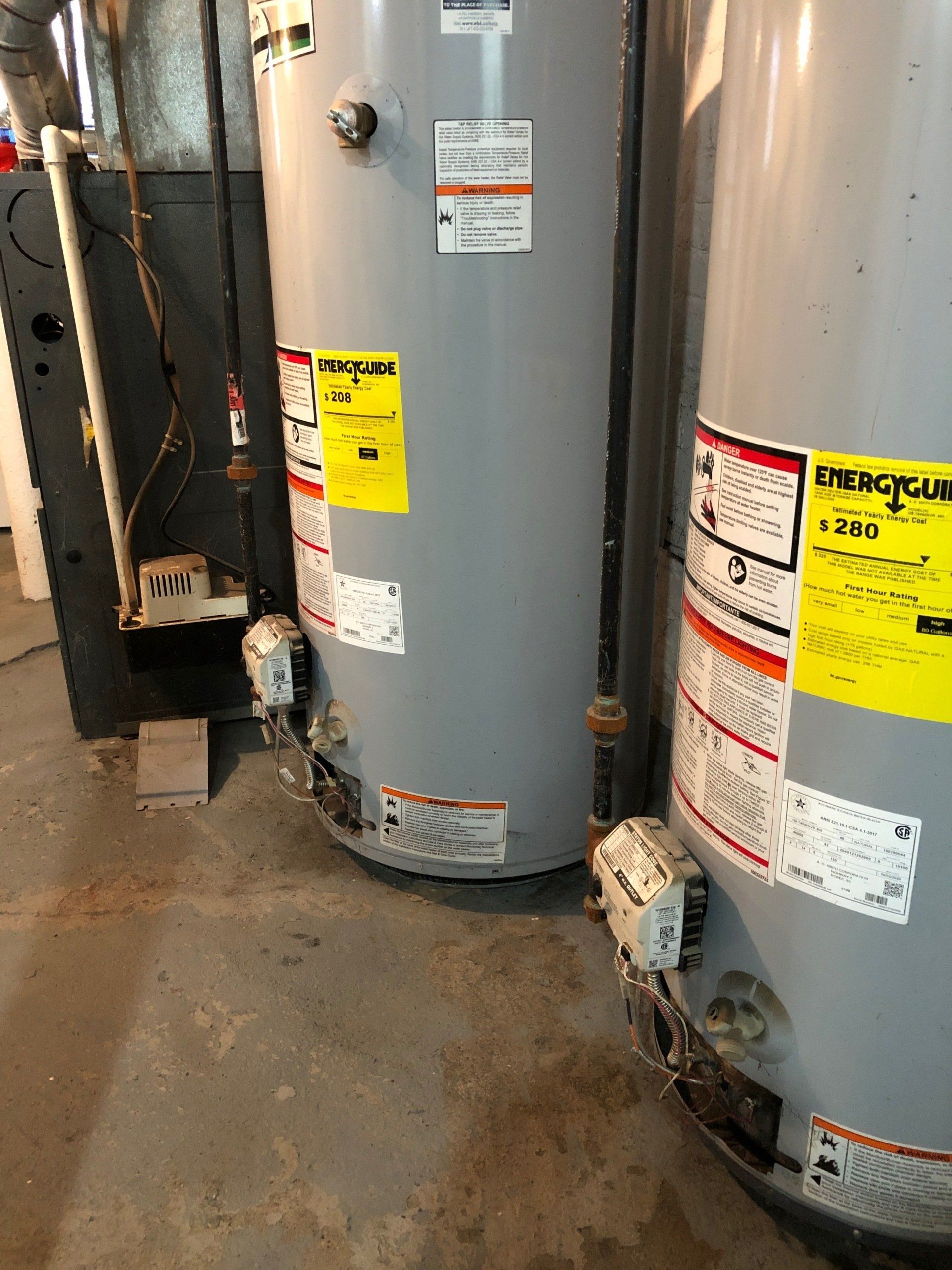
True Story: The units above were covered by 4 feet of flood water. After drying the area, the customer filed a warranty claim, but did not notify the manufacturer of the cause of their water heaters' issue. As a result, our technician was unable to repair the units and the warranty was voided (no labor, parts, or tank coverage).
We do not stock residential burner assemblies because:
- Ordering Difficulties: They usually need to be assembled by the manufacturer and are made to order, which can delay restoration of hot water by one to two weeks, even with expedited shipping services
- Unique Burner Assemblies: Every model has a different burner assembly
- Cost: A burner assembly can be extremely expensive and require more than 30 minutes to install, further enticing customers to invest in a new heater with a warranty instead of investing a large amount of money into their existing unit; based on the cost and time investment, as well as hiring a professional to replace the burner assembly,
- Size: We have limited warehouse space and each burner assembly will take a large amount of space
How to reduce the risk of flood damage to your water heater
If you live in an area that is at greater risk of flooding (you can also see your area's current flood risk designation by checking FEMA's Flood Maps) there are some precautions you can take to reduce the risk of water heater damage in the event of a flood:
Installing Your Water Heater on a Stand or Installing Your Water Heater on Blocks
The most common reason for flood damaged water heaters is the installation location: in the Midwest and South, many water heaters are installed in basements and placed directly on the floor. If the basement floods and the floor is covered with water, so is the water heater.
A simple way to reduce the risk of a submerged water heater is to install the water heater on a water heater stand. Water heater stands are typically sold at hardware stores and plumbing suppliers, as well as by the major water heater manufacturers. They typically cost between $40.00 and $150.00 each. Be sure to measure your water heater and check the specs of the water heater stand prior to purchase.
A cheaper alternative to the water heater stand is to install your unit on top of cinder blocks or another safe and durable material. Please see the safety advisory near our example photo of commercial water heaters installed on top of cylinder blocks.
Important Things to Remember About Raising Your Water Heater
Adding a water heater stand or blocks to your installation can raise your water heater anywhere from 6" to 24" on average. If your home or business did not previously have a water heater raised this high, it is important to properly evaluate the space to ensure the ceiling is high enough and that the piping and vent run can be run safely given the adjustment(s). Finally, it is important to ensure that you have the proper equipment and a professional team to assist you for safety purposes. An empty residential 40-gallon water heater weighs roughly 130 lbs, but lifting it up an additional 1 to 3 feet is best done by a professional.
Contact U.S. Water Heating Solutions today to
request a quote to raise your water heater.
IMPORTANT SAFETY ADVISORY: NEVER balance a water heater on cinder blocks or other materials that are not rated to hold a weight larger than that of your water heater. Always check to make sure the water heater stand, cinder blocks, or other material is level before attempting to place a water heater on top; you should also have at least one other person nearby when raising the water heater to help you spot and check that the unit is level.
Did you know?: A 40-gallon residential water heater can weigh 400+ pounds when full of water and a commercial water heater can weigh upwards of 1,400 pounds when full.
My water heater was damaged in a flood. What should I do?
Bottom Line: The water heater's warranty will be voided and the unit should be replaced due to potential for corrosion, contamination of the insulation, and various risk factors. You may be able to file a claim with your homeowner's insurance to assist with recovery costs.







